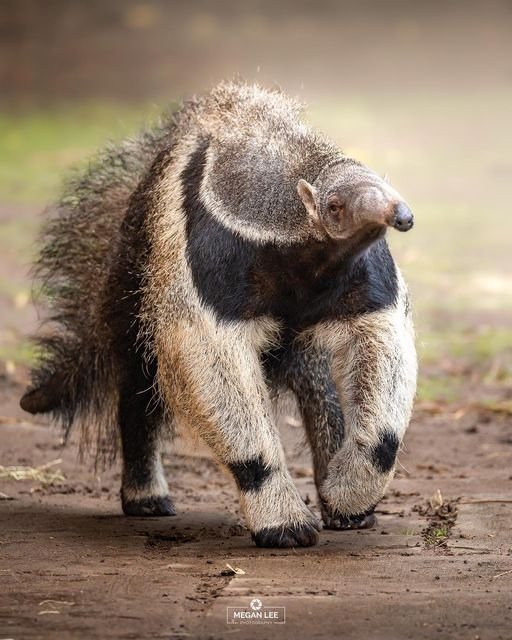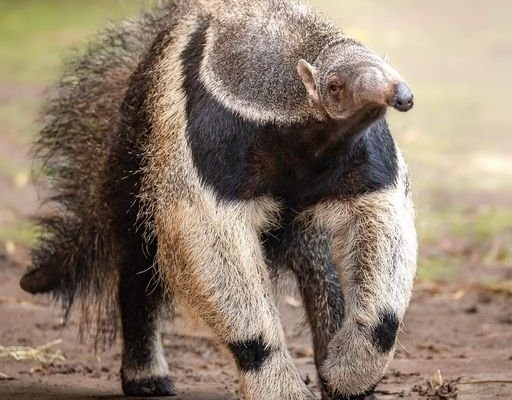
Imagine this: a mother giant anteater, about the size of a small dog, is wandering through the dense forests or grassy plains of Central and South America. Alongside her is a tiny bundle, a baby anteater clinging to her back, much like a backpack. This image captures the essence of how giant anteaters invest in their little ones, and it’s a beautiful sight in nature. So, let’s explore the journey of parenthood for these remarkable animals.
Understanding Anteater Family Dynamics
Giant anteaters are solitary creatures, often seen wandering alone. However, once they have little ones, that changes dramatically. The mother plays a crucial role in nurturing her young. Interestingly, giant anteaters are not typical mammals when it comes to parenting. Instead of staying with the father or forming a typical family unit, the mother solely takes care of the offspring. This might sound a bit lonely, but it allows for a focused approach to child-rearing, ensuring that the baby gets everything it needs.
When it comes to their living arrangements, these anteaters usually choose habitats that provide both food and safety. You’ll often find them in areas with plenty of ants and termites, their main food sources. Think of it like setting up a home base in the middle of a buffet. Plus, the varied environments, from forests to savannas, give them plenty of options to find the best places to raise their young.
Gestation and Birth of the Baby Anteater
The journey of parenting begins with pregnancy, which lasts about six months. Here’s the thing: during this time, the mother anteater prepares herself for the arrival of her baby. She becomes more cautious about her surroundings, ensuring she can find food and shelter without taking unnecessary risks. Once the baby is born, it often weighs less than a pound. Can you imagine? A tiny creature that will one day grow up to be as big as a small dog!
After birth, the little anteater is relatively helpless. It can’t see or hear right away and relies almost entirely on its mother for survival. This is where the mother’s role becomes even more critical. She will carry her baby on her back for the first few months. This not only keeps the baby safe but also helps it stay close while the mother forages for food.
Feeding and Nutrition for the Young
You might be wondering how a baby anteater gets its nutrition. During the first few weeks, the baby feeds on its mother’s milk, which is essential for its growth. Once the little one starts to grow, around the age of two months, it begins to sample solid food. This means diving into the delicious world of ants and termites, just like mom!
The baby learns to forage by observing its mother. It’s like a nature’s version of “watch and learn.” The mother will demonstrate how to dig into ant hills and tear open termite mounds. Often, the mother will pick a safe and abundant spot while teaching her young one the best techniques. This hands-on approach is vital; it prepares the young anteater for a life of independence.
Learning and Socialization
As the baby anteater grows, it starts to explore its environment. This stage is crucial for learning. The mother allows her baby some freedom but keeps a close eye on it. You might picture her as a protective helicopter parent, making sure her little one doesn’t stray too far or get into trouble.
Social interactions, although limited with other giant anteaters, are key for the young’s development. While adult anteaters are mostly solitary, the baby will sometimes encounter other young ones. This experience is essential as it teaches them about communication and recognition of potential threats. Even in the wild, learning to navigate social cues is important, just like it is for us!
Independence and Leaving the Nest
Eventually, the time comes when the baby anteater must learn to stand on its own feet. By the time they are about a year old, they start to become more independent. The mother gradually encourages this by offering less assistance during foraging. Think of it as sending a child off to college; it’s a mix of excitement and a touch of sadness.
At this point, the young anteater will often start to wander off but usually remains close to its mother. You’ll find them in close proximity, occasionally foraging together. This gradual stepping-away process helps the young one develop survival skills while still having the safety net of its mother nearby.
Challenges in Raising Young Anteaters
Despite the fascinating process of raising young anteaters, there are significant challenges. Habitat loss due to deforestation and agriculture poses a major threat. With fewer areas to roam, finding food becomes increasingly difficult, impacting both mothers and their young.
Additionally, predators, such as jaguars and dogs, can pose a serious risk. Mothers must be vigilant, always on the lookout for danger while also teaching their young how to avoid it. This dual responsibility makes the job of an anteater parent incredibly challenging. Yet, they manage to navigate these obstacles with resilience.
Raising young in the wild is no easy feat, but giant anteaters have developed unique strategies to ensure their babies thrive. From providing nourishment and protection to teaching vital foraging skills, mother anteaters play an essential role in their offspring’s survival.
It’s intriguing to think about how these remarkable creatures, despite their solitary nature, show such dedication to raising their young. Understanding the life of a giant anteater not only highlights their parenting strategies but also shines a light on the environmental challenges they face. As we continue to explore the beauty of the natural world, let’s remember the importance of protecting the habitats these creatures rely on. What a world it is out there!

